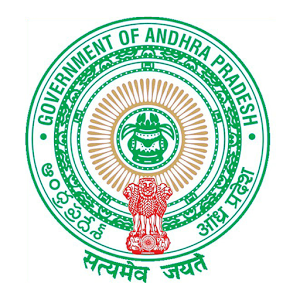
APPSC Group 2 Syllabus Exam Pattern 2018

APPSC GROUP- II SYLLABUS
SCHEME OF THE EXAMINATION
| Subject | Marks |
| Screening Test | 150 |
| Paper –I
General Studies |
150 |
| Paper – II
I. Social History of Andhra Pradesh i.e., the history of various social and Cultural Movements in Andhra Pradesh II. General overview of Indian Constitution |
150 |
| Paper –III
Planning in India and Indian Economy Contemporary problems and Development in Rural Society with special Reference to Andhra Pradesh |
150 |
| Total | 450 |
SCREENING TEST SYLLABUS FOR GROUP-II SERVICES
a) Current Affairs –
Issues of National and International importance in politics, Economics, Society, Science, Technology, Arts, Sports, Culture and Governance.
b) Constitution of India with emphasis on –
Federalism, Fundamental Rights, Fundamental duties, Union and State Governments, Judiciary, Judicial Review, Local Government, Directive Principles of State Policy, Union and State Legislature, Administration and Legislative relations between Union and State Governments, Scheduled and Tribal Area Administration.
c) Economic Development of India –
Economy in Medieval India, pre-Independence Indian economy, Development Plans and Economic and Industrial Policies of Independent India. Liberalizations, Privatization, Globalization, Labour Policies of Union and State Governments, role of Agriculture and Green Revolution in India. Economic disparities between regions and population categories.
MAINS SYLLABUS
PAPER –I – GENERAL STUDIES
1. Events of national and international importance.
2. Current affairs- international, national and regional.
3. General Science and it applications to the day to day life; Contemporary developments in Science & Technology and Information Technology
4. Social- economic and political history of modern India with emphases on Indian national movement.
5. Indian polity and governance: constitutional issues, public policy, reforms and e-governance initiatives.
6. Economic development in India since independence.
7. Physical geography of India sub-continent.
8. Disaster management: vulnerability profile, prevention and mitigation strategies, Application of Remote Sensing and GIS in the assessment of Disaster
9. Sustainable Development and Environmental Protection
10. Logical reasoning, analytical ability and data interpretation.
11. Data Analysis:
a) Tabulation of data
b) Visual representation of data
c) Basic data analysis (Summary Statistics such as mean and variance coefficient of variation etc.,) and Interpretation
12. Bifurcation of Andhra Pradesh and its Administrative, Economic, Social, Cultural, Political, and legal implications/problems, including
a) Loss of capital city, challenges in building new capital and it’s financial implications.
b) Division and rebuilding of common Institutions.
c) Division of employees, their relocation and nativity issues.
d) Effect of bifurcation on commerce and entrepreneurs.
e) Implications to financial resources of state government.
f) Task of post-bifurcation infrastructure development and opportunities for investments.
g) socio-economic, cultural and demographic impact of bifurcation.
h) Impact of bifurcation on river water sharing and consequential issues.
i) AP REORGANISATION ACT, 2014 on AP and the arbitrariness of certain provisions.
PAPER –II
Section-I – Social and Cultural History of Andhra Pradesh
1. Social and Cultural History of Andhra Pradesh: Geographical Features of Andhra – Its Impact on History and Culture – Pre-History – The Satavahanas, Ikshvakus – Socio-Economic and Religious Conditions – Literature, Art and Architecture – The Eastern
Chalukyas of Vengi – Society, Religion, Telugu Language, Literature, Art and Architecture.
2. Socio- Cultural and Religious conditions in Andhradesa between 11th to 16th Centuries A.D, Growth of Telugu Language, literature, Art, Architecture and Painting- Contribution of Qutubshahis to Andhra History and Culture.
3. Advent of Europeans- Trade centers- Andhra under the Company–1857 Revolt and its impact on Andhra- Establishment of British Rule- Socio-Cultural awakening, Justice party/self respect movements- Growth of Nationalist Movement in Andhra between 1885 to 1947– Role of Socialists– Communists– Anti- Zamindari and Kisan Movements. Growth of Nationalist poetry.
4. Origin and growth of Andhra movement- Role of Andhra Mahasabhas- Prominent Leaders- Events leading to the formation of Andhra State 1953. Role of News Papers in the Andhra Movement.
5. Events leading to the Formation of Andhra Pradesh State – Visalandhra Mahasabha – States Re-organisation Commission and Its Recommendations – Gentlemen Agreement – Important Social
and Cultural Events between 1956 and 2014 .
Section-II – An Overview Of The Indian Constitution
1. Nature of the Indian Constitution – Constitutional Development – Salient features of Indian Constitution – Preamble – Fundamental Rights, Directive Principles of State Policy and their relationship – Fundamental Duties, Distinctive features – Unitary and Federal.
2. Structure and functions of Indian Government – Legislative, Executive and Judiciary – Types of Legislatures – Unicameral, Bicameral – Executive – Parliamentary, Judiciary – Judicial Review, Judicial Activism.
3. Distribution of Legislative and Executive Powers between the Union and the States; Legislative, Administrative and Financial relations between the Union and the States– Powers and the Functions of Constitutional Bodies – UPSC, State Public Service Commissions, CAG.
4. Centre- State relations- Need for Reforms- Rajmannar Committee, Sarkaria Commission, M.M. Punchchi Commission, – NITI Aayog – Unitary and Federal features of Indian Constitution.
5. Amendment Process to the Constitution – Centralization Vs Decentralization – Community Development Programs- Balwantray Mehta, Ashok Mehta Committees- 73rd and 74th Constitutional Amendment Acts and their Implementation.
6. Indian Political Parties- National, Regional- One Party, Bi-Party, Multi-Party Systems – Regionalism and Sub-Regionalism–Demand for New States – Sri Krishna Committee – National Integration – Threats to Indian Unity.
7. Welfare Mechanisms in India-Provisions for Scheduled Castes, Tribes and Minorities, Reservations for SCs, STs and Backward Classes- Prevention of SCs and STs Atrocities Act- National and State SCs, STs and BC’s Commissions, Women’s Commission, National and State Minorities Commissions – Human Rights
Commission- RTI- Lokpal and Lok Ayukta.
PAPER-III
Planning in India and Indian Economy
Planning in Indian Economy and present status: Socio- Economic – objectives and outlays of Five Year Plans – alternative strategies – Goals and Achievements – Causes for failure of different Plans –New economic reforms 1991. Regulation of the Economy – Creation of regulatory bodies-NITI AayogCo operative Federalism and decentralization of financial resources.
Indian Economic Policies: Agricultural policies – Industrial policies since 1956 – IT industries – Monetary policy of RBI – Fiscal policy – Objectives – Fiscal Imbalance and Deficit Finance –New Foreign Trade Policy. Current account imbalances; FDI.
Availability of Natural resources and Development: Population- size, composition and growth–Trends; Occupational Distribution of Work force –Human Development Index as a measurement of development. Demographic Dividend.
Money, Banking and Public Finance: Concept of Money and measures of money supply; Creation of credit by Commercial Banks; determination of Price level- Inflation, its causes and remedies; Budget – taxes and non-tax revenue. Goods and Service Tax (GST)
Meaning and Measurements of Growth: Distinction between growth and development – Measurement of growth – Growth, Development and Underdevelopment – Characteristics of Underdevelopment – Stages of development – Sources of capital formation – Growth strategies; Deregulation and growth.
National Income: National Income and concepts – Gross Domestic Product – Net Domestic Product, Per capita income.
Economy of Andhra Pradesh
1. Contribution of agriculture to income and employment in Andhra Pradesh. Land reforms in Andhra Pradesh – Need for Land Reforms – Structure of Land Holdings Forest and sown– Irrigated area – Cropping pattern – sources of agricultural finances – agricultural subsidies – public distribution system in Andhra Pradesh.
2. Five years plans of Andhra Pradesh – Outlays – Finance in public sector plans – Resource allocation pattern in the five year plans of Andhra Pradesh under develops after NITI Aayog.
3. Economic policies of A.P including industrial and implementation and mission based development state Government. Industries in Andhra Pradesh – Growth and structure of industries – Role of Small Scale and Cottage Industries – structure of Co – operatives – share of Co – operatives in total credit of Andhra Pradesh. Energy management
4. Service sectors of Andhra Pradesh – Importance – Composition and growth with special reference to Power, Transport and Communication, Tourism and Information Technology in Andhra Pradesh.
5. Socio Economic welfare Programmes of Government of Andhra Pradesh.
APPSC Group 2 Syllabus Exam Pattern 2018 Download
APPSC Group 2 Syllabus Exam Pattern 2018 Download










